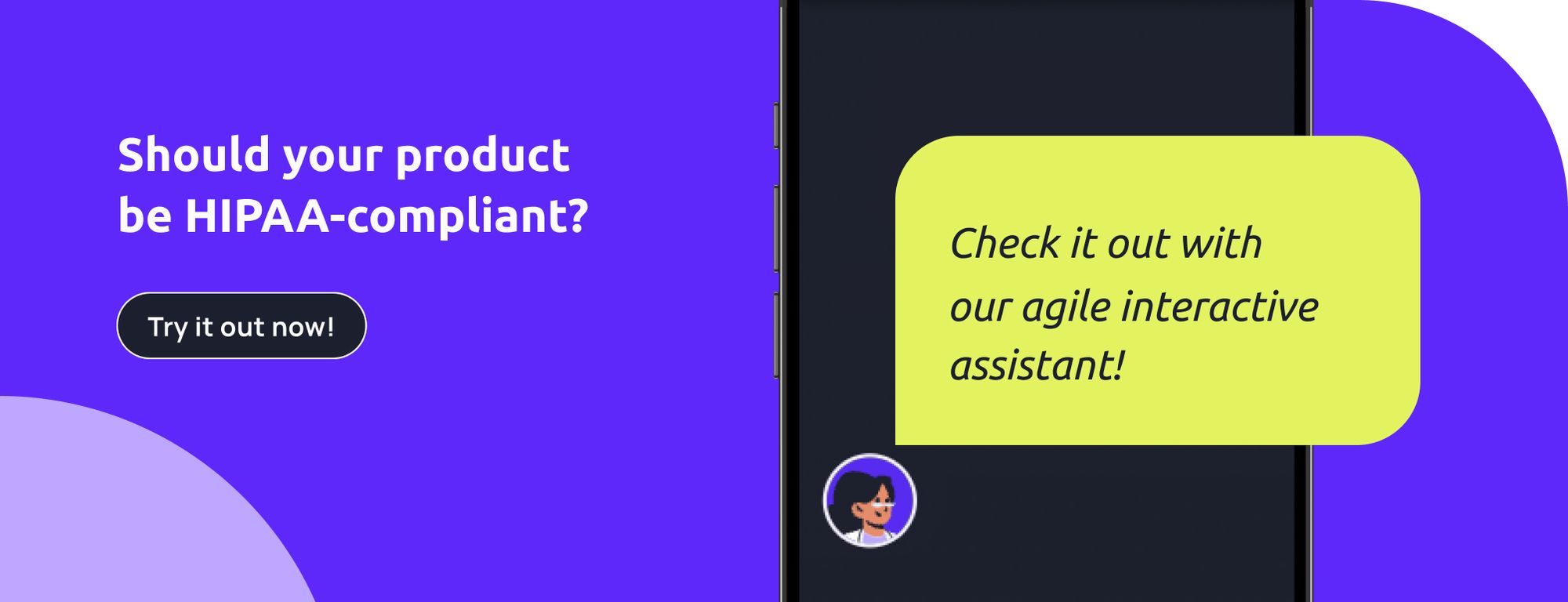What is interoperability?
It's the ability of different systems, such as applications, devices, or others, to connect, integrate, get access, exchange, and even use the information of one another in a secure, organized, and fast way. This means that the data can move smoothly between devices without compromising the safety or privacy of such information, as it always keeps all data compliant with its corresponding regulations and restrictions.
What is interoperability in healthcare?
Specifically, interoperability in healthcare can be defined as the safe and rapid integration of Electronic Health Records (EMRs) and Electronic Health Information (HIE) services between different health agents. The main goal here is for healthcare providers to gain access to and use all patient's data, including the one from healthcare providers that are external to their organization, so they can be fully informed of each specific situation and suggest better courses of action that can improve patient's health and optimize outcomes. In other words, accessing databases that aid research and help understand each patient's situation can lead to better healthcare program offerings.
Why is interoperability important in healthcare?
We all know that each patient's medical record is a private matter, and as such, it should be safeguarded correctly. Also, it's a fact that when treating a patient, the more data the physician has available on the specific patient's situation, the better and more accurate treatment they can receive, and hence, the more chances of success they will have.
Besides, as technology advances and progressively immerses in the healthcare industry to optimize processes and add value, more and more medical records and patient information have become digital. In this accelerated world where data is the biggest asset and everything is going digital, it is important that the health system doesn't stay behind. Although doing this means efficiency in many ways, essential information becomes fragmented and scattered in different systems that are not necessarily connected. So, knowing that the more information physicians have about each patient's situation, the better, quicker, and more accurate treatment decisions they can take to improve a patient's health, we would need a bridge between all of those fragments of digital information that safely connects them in specific systems simultaneously. Here is where the importance of interoperability in healthcare stands out.
Key benefits of interoperability in the healthcare industry:
In a nutshell, the key benefits of interoperability in healthcare are:
- Reduce the cost of care by reducing medical errors and administrative time (mitigates physician burnout caused by preparing reports, requesting orders or information, paperwork logistics, etc.).
- Protecting o protect patient data by focusing on security and privacy.
- Increase healthcare efficiency as its data unity allows better care coordination and performance.
- Enhance patient experience as it allows quicker and smoother processes.
- Increases quality of care as it provides a broader sense of each patient's situation and, thus, delivers more accurate services.
- And many more!
US challenges in interoperability healthcare
It sounds reasonable that safely connecting and sharing those fragments of digital information between systems helps physicians be fully informed and make better treatment decisions, but its actual implementation is still not ubiquitous in the US. The reasons behind this challenge are manifold, from regulatory issues to a lack of consistency in different technologies and even a lack of incentives. Besides, there is such competition in the US for different health institutions offering health services. Patients simply seek the one that stays on budget and gives them the best they are looking for in every situation or condition. In other words, patients have poor loyalty to health agents as they seek specialization to achieve better treatment results. The problem here is the non-centralized way the health system works in the US, as this fragmented data is not easily and safely shared between agents, and physicians usually lack information when treating patients, which acts as a barrier to getting the best health results.
Thus, we can affirm that interoperability solutions are a crucial factor that incentivizes the whole US health system to communicate better, keep specializing in different areas, work with the best practices in treatments, and, hence, achieve better health results for numerous patients. But, still, much progress is yet to be made in the US to allow us to fully benefit from all interoperability's advantages.
What are the main drivers of healthcare interoperability?
Knowing that the primary goal of interoperability is the usability of existing data in a standardized way so agents of the industry can offer a quicker and more personalized service for all patients, here are the main drivers that directly affect it:
- Adoption:
It's a game of numbers, and luckily, we'll reach a point where standard criteria are implemented, at least in some settings. Here, regardless of the level, the success of interoperability in healthcare depends on the joint efforts of the agents in the industry, which isn't that efficient nowadays. But, despite more organizations being on board with interoperability initiatives, according to IMB, less than half of US hospitals are integrating patients' record information
2. Shared standards:
This is a core issue regarding interoperability's growth as standard formats are the way forward and are gradually replacing customized systems that hinder information sharing. Here, we are working with tons of data, and all counts have different characteristics, so we have to transform it into shared standards that ensure all agents can use the same languages and approaches to interpret, store, and use it correctly. There are more than 40 different standards in the digital health industry. For example, we have transport standards such as FHIR (we'll circle back to this one later on), content standards such as HL7, terminology standards like CPT, security standards such as HIPAA, and much more. With these, the health system can exchange EMRs correctly regardless of the software provider. Once standards are fully adopted in the industry, interoperability is set to grow and transform healthcare as we know it.

3. Privacy and Security:
A huge concern in all aspects of the healthcare industry. This issue has been vastly addressed with protocols, regulations, and laws. For example, HIPAA compliance is required by the US federal government, SOC2 compliance, and ISO standards, among others. When seeking interoperability in the industry, it's crucial to keep the PHI (Protected health information) compliant with all of these, and although it's a great challenge and effort to be updated in each one, all agents must take them into account to operate correctly.
4. Incentives:
From a structural point of view, incentives hold the key to massifying interoperability. From financial incentives to exclusive databases, rewards could impact how interoperability expands. In the US, there is still lots of room for these, and it may be a great solution in the long run.
Are there levels of healthcare interoperability?
As defined by HIMMS (Healthcare Information and Management Systems Society), there are four levels of interoperability in healthcare:
- Foundational:
Foundational interoperability is the most basic level. Here, data is transferred between systems, but no interpretation or transformation to shared formats is performed. For example, a patient's lab results are downloaded in Excel and manually added to the patient's record.
2. Structural:
At a structural level, all data is standardized to one format, meaning many systems can now easily interpret it. An example is the list of patients' prescriptions that different agents need to operate, where two or more systems need to read the information and identify the different drugs suggested by the physician. Some standards employed at this level are FHIR and HL7.
3. Semantic:
At a semantic level, information can be exchanged, interpreted, and incorporated between systems with different data structures. Systems recognize shared elements in objects with other formats and exchange this information, which means that the exchange goes beyond the structure of the data and into its content. This is the case with imaging systems, which are often presented in different formats yet portray the same content. To recognize this, systems require a certain level of understanding that becomes possible thanks to Artificial Intelligence. AI technologies can be applied to different images and detect, for example, bone fractures or other complications easily. The healthcare industry is increasingly implementing these technologies, although not yet massively.
4. Organizational:
Organizational interoperability refers to the seamless sharing of information between various entities with different requirements. To achieve this, policy and governance must be clearly defined and enforced.
What is FHIR?
FHIR, -Fast Healthcare Interoperability Resources-, is an open-source standards framework for healthcare data that organizes information by type (for example, conditions or medications) in a way that makes it readable and interpretable by different systems so that they can transport the data easily. FHIR has been widely adopted in the US. It will continue to expand after being selected as a key aspect of the national roadmap for interoperability.
One of its strongest advantages is that it allows organizing information beyond strictly medical data into everything surrounding healthcare, like claims information, appointments, and financial flows. This broader view gained by FHIR can give us a complete look at patient interactions during treatment. FHIR also allows the patients to access the information, making them critical actors in their processes.
What is SMART on FHIR?
SMART (Substitutable Medical Applications, Reusable Technologies) is an open-source, standards-based API that relies on existing standards and protocols to grant secure access to Electronic Health Records (EHR). This API builds on FHIR and provides a benchmark for how EHR systems integrate and authenticate, thus increasing the number of applications that healthcare providers can use. In other words, SMART looks to be a universal API that transforms EHRs into platforms for substitutable applications, allowing hospitals and healthcare providers to try out different technology solutions and discover what works best for them.
SMART on FHIR helps healthcare professionals assemble and integrate data from different sources, thus simplifying and streamlining access to information in a single source.
The combination of SMART and FHIR is also game-changing for developers. They have everything they need to create applications and systems that work for the healthcare world: libraries, sandboxes, a gallery of existing applications, and others that streamline their work.
How SMART Improves Healthcare Interoperability and Delivery
In a way, SMART acts as a mediator to help healthcare professionals simplify their access to information without compromising its security or privacy. Most EHR databases currently use a custom API, which means universal access to information becomes costly, takes time, and limits the technology that can be used. In contrast, SMART provides a standard, universally shared API that opens us EHRs. All technologies built with SMART are compatible with each other, making systems capable of exchange and enhancing the horizon of applications that can be employed.
SMART also means innovation, as new digital products can be developed with the certainty that they will not cause issues or problems with other applications when exchanging information and, thus, won't negatively affect the patient's experience. Applications are also developed faster, improving the whole industry and ecosystem.
Today, adopting SMART is a must in healthcare because it enhances the horizons of all stakeholders in the industry. For patients, it's the tranquility of keeping their entire information safe, confidential, and accessible to their doctor. For healthcare professionals, the ease -and speed- of access to potentially life-saving information can change a patient's outcome. For developers, it's the number of potential users they can directly reach, plus the ease and speed of development. The future of healthcare is here.

